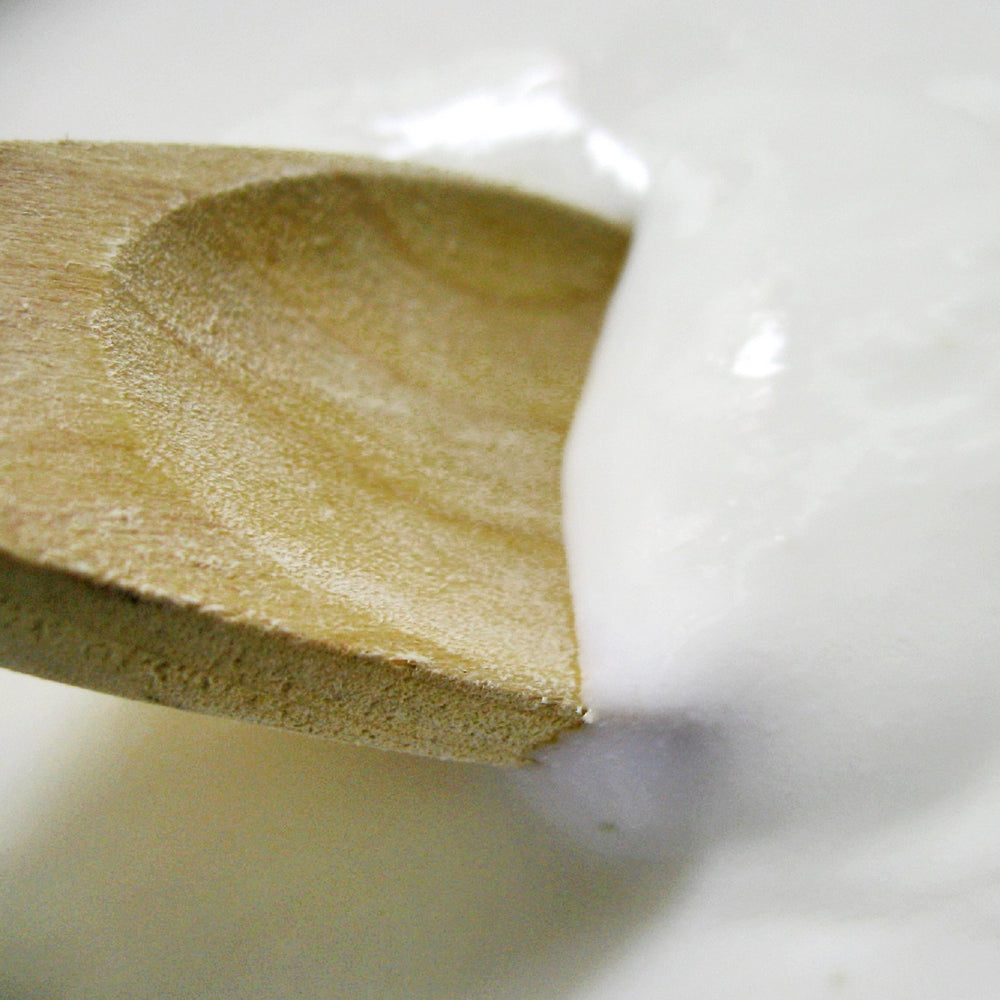
There is nothing more delectable than thick creamy kefir that goes down smoothly. There a several techniques you can do to make that milk kefir thick. So together, "Let's make kefir thick again".
1. Use whole milk
This one is pretty obvious, but the more fat in the milk, the thicker it will tend to be. So try whole milk instead of 2%, 1% or fat-free milk. If you truly desire low fat kefir, you may have to live with thinner kefir or try some of the other steps below to get somewhat of a thicker consistency.
2. Use cows milk
Cows milk has proteins that has a thick coagulation. Goats milk and most other alternative milks have a different protein structure and will naturally come out thinner. There are ways to make a thick goats milk kefir, but its certainly more challenging.
3. Store in the fridge
Sometimes all it takes to thicken up is a few hours in the fridge. Try shaking it and then storing in the fridge and that can sometimes get it even thicker. Just keep in mind that the agitation of shaking up the kefir can cause quick separation or faster fridge fermenting. But if the kefir is already greatly separated, a good shake can help things out.
4. Ferment on the cooler side
People who have done kefir for years will generally say that they notice that their kefir is naturally thicker in the colder months and thinner in the summer. This is due to activity of the bacteria and yeast. Slow cool ferments tend to favor a more bacteria rich ferment which will result in a thicker ferment. Summer ferments tend to be fast, thin and yeasty. Still can be delicious, but not usually thick. Ideal temperature is low 70's. Anything lower and it may not ferment right and anything warmer and it tends to be more yeasty and thinner.
5. Ferment exclusively in the fridge
Typically fermenting right out of the fridge will give your kefir a thicker and richer consistency. It typically takes about a week per batch. Just keep in mind that it changes the flavor and balance of the grains a little bit. Some people prefer it as it tends to be more bacteria rich, but it loses it a bit of that multi-dimensional flavor that room temperature ferments tend to do. Also long term fridge fermentation can sometimes stop grain growth (sometimes forever).
6. Fermentation Time
Too little fermentation and it can be too thin and too long of a ferment and it can turn watery and thin. Ideally, you want to stop the ferment just when you just start to see pockets of whey forming. Another trick that sometimes works to get it thick is to try to ferment for a short amount of time 12-24 hours and then strain and let is sit out at room temperature for another 12-24 hours without the grains.
6. Try lime or lemon peel

Try lime or lemon peel as a second ferment. Once the kefir is finished, strain the grains and then put in some lime or lemon peels for a few hours at room temperature. The milk will typically congeal with the peels and come out with a nicely thicker consistency.
7. Add cream or thickener
One trick is to add cream after its done fermenting. It will thicken it up nicely. Blend in some cream and some fruit and you have a delicious thick kefir milk shake. Other thickener options that you can add is tapioca, gelatin, ultra-gel or agar.
8. Combine with viili to make a hybrid kefir viili.
Milk kefir grains that successfully combine with the Viili bacteria will create a really thick and more mild kefir every time. Sometimes its so thick that its difficult to strain. WARNING: Once milk kefir grains combine with Viili, there is almost no turning back and they may stay that way forever. So if desired, just simply add Viili to the kefir ferment and hope that they take to the new strain. Sometimes they resist greatly and other times, they will readily accept the new viili strain. It tends to work better with pasteurized milk as a raw milk kefir is more highly resistant to the viili strain.





Comments
Rick Yeoman
Putting a tablespoonful ( to six cups MK) of ground flax seed and oat bran in the second ferment does it for me. A prebiotic and probiotic bomb.
February 08, 2025
Dawnn
Great article and group of comments, thank you for the great information. My husband loves the thick, rich taste of the quality commercial brands but I want to make it at home. Now I have great ways to make mine better!
February 08, 2025
Debbie
Very pleased with my grains. I’ve made kefir before and know quality grains. These are quality grains and fully active. I’m very pleased!
October 26, 2023
Yemoos Nourishing Cultures
Abigail – That is a good question. When I tried the hybrid, I could taste the melding of both the kefir and viili. It definitely still had that kefir flavor overall, but it was a bit more mild like Viili. It felt more like a mix between the two and not just a thick kefir. I would only recommend if you enjoy experimenting and not worried about the purity of your kefir.
July 12, 2021
Abigail
Will adding viili culture to the kefir grains result in a loss of kefir’s unique health benefits, making it more like viili instead? Or would you expect the combined kefir/viili grains to retain the health benefits of kefir?
July 12, 2021
Kristin
I am completely blown away by how much and accurate and detailed information you have put in such a small space compared to the over 400 articles I’ve read over the last 3 years. Whoever said this is the best article on any given subject matter ever was 100% correct! Tomorrow I’m going to make low carb kefir. I’m a type 1 diabetic and if I could drink a gallon of it a day I would. I don’t know if it will work but, after reading your article in all the comments oh, I don’t see why it would not. I’m going to buy organic pasteurized whole milk. And then going to do half either purified water are filtered or spring I have no idea but not tap… So say one quart of milk in 1 quart of water with either grains in a cage what freeze dried I don’t know. I’m pretty sure it will work but I am not sure about the timing. I have seen references to diluted cream which I have heavy cream powder and the only heavy whipping cream here is ultra pasteurized but I would hesitate because of the lack of lactose… I know this is so long but I would give anything for any of the people that commented or the author because all of you sound like you really know your stuff, opinions. Please cut out as much as you want if it helps me get in! :)
June 19, 2020
Kristen
Hello! Thank you so much for the coffee filter tip + strainer tip. I just put a little set-up together and I already see whey dripping out, which will give us the thick kefir that we love and some whey to experiment with! Thanks again :)
January 15, 2020
Nancy~Nandarani
Weighing in to make the compliment explicit. This is the best article on the internet on this subject. I looked over just the blurb on a few without opening the links. It would fit into a category of most useful article on any subject if such a category existed. Am trying the zest from a lemon; just about 1/2 teaspoon of 1/4 to 1/2 inch slivers from a peel. Already after a few hours the kefir looks and feels thicker. The author knows the mechanics but on a certain level this makes sense and like trying villi with kefir is creative and courageous …. and what fun, trusting in Divine Providence .. .
November 27, 2019
Nancy~Nandarani
I am so glad I read this and that I can respond to it in a comment. It came up at the top of a search engine search and it surely confirmed so many of the options I’ve earned through experience. I may try the villi option after I ponder some more the effect of doing it on the grains I have which are strong. It is true that continuous fermentation in the refrigerator does stop the growth or something did.it and I assumed it was the ultra pasteurized millk. Interesting that the option suits pasteurized milk best, the only kind here. Am presently in Honolulu, land of the quick ferment.
November 27, 2019
Carl
I like the results from fermenting in the refer for 24 hours, and then on the counter for another 24 hours. Not too yeasty. Reasonable thick and creamy. Sometimes I separate the grains and then add berries to the kefir… although, that does really get the carbonation going… guess that’s the yeast.
September 26, 2018
Leave a comment